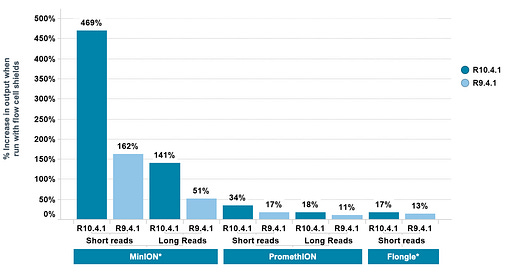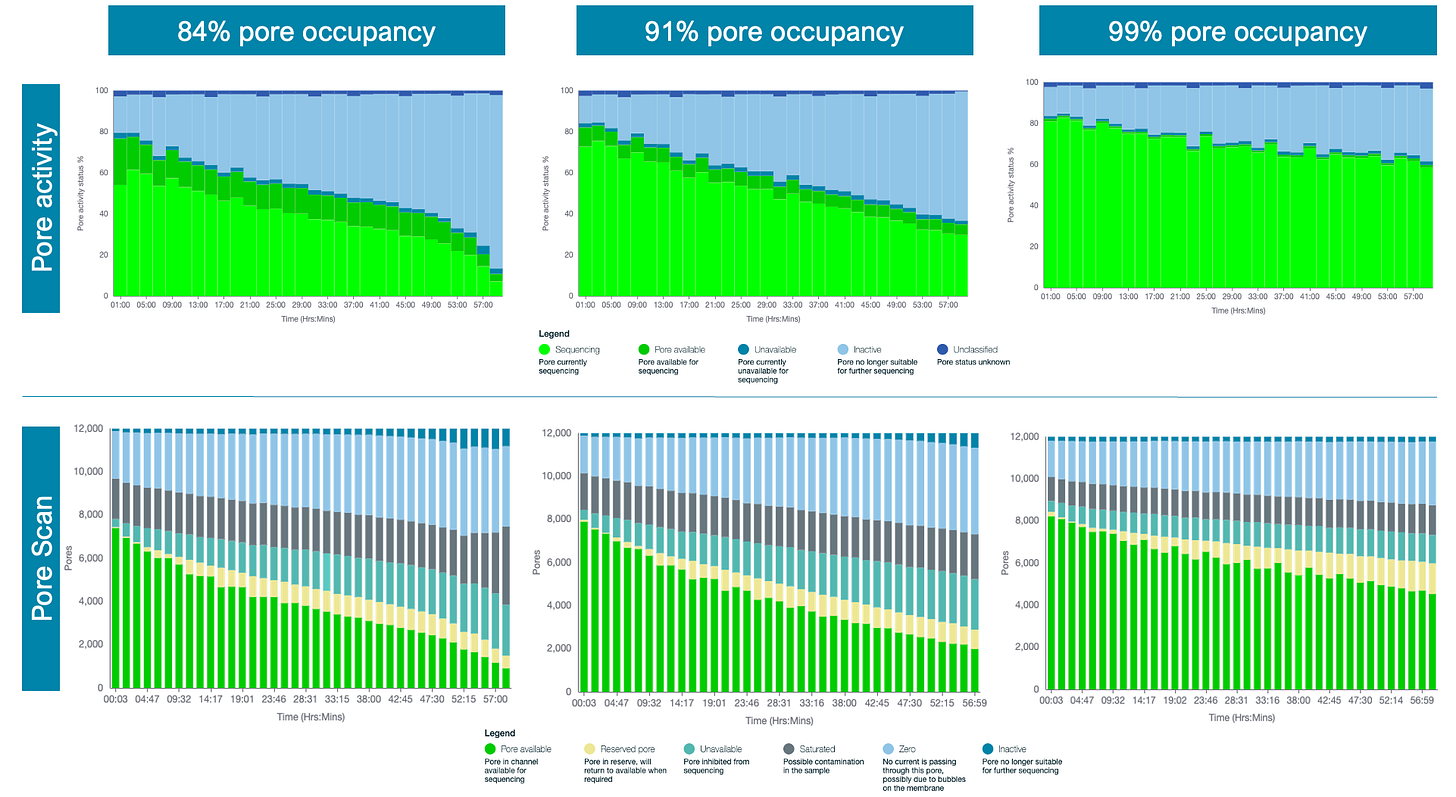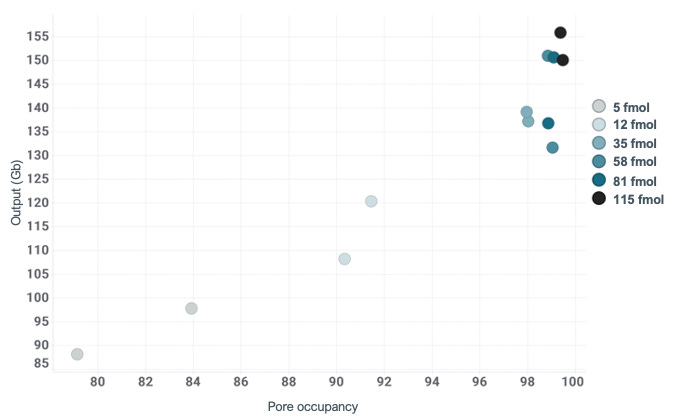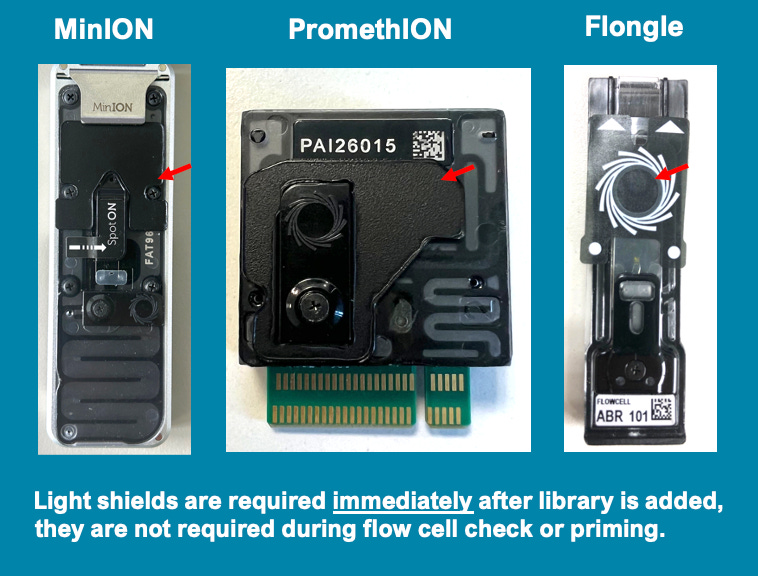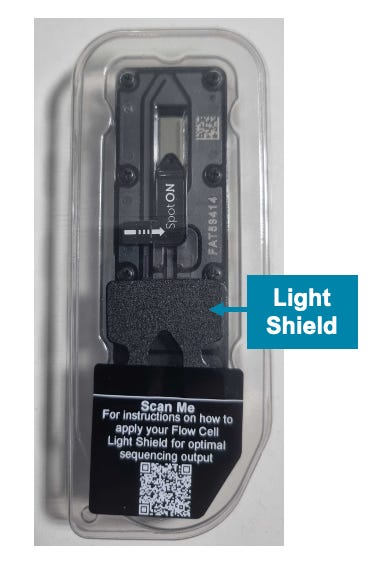New Oxford Nanopore 'dark mode' sequencing
And what it means for not-so-long sequencing applications
Oxford Nanopore Technologies (ONT) is known for its cutting-edge nanopore sequencing technology, which works for any type of DNA or RNA sequence length and includes base modifications in the sequencing. It’s an extremely flexible and widely deployable technology, without any real competitor in terms of the type of sequencing that it can do. Illumina and Element Bio in short-reads and PacBlo in long-reads are competitors in some applications, but none of them have the flexibility of the nanopore technology in ONT.
New ‘dark mode’ sequencing (light shield)
ONT published an update on their community website regarding a new sequencing mode, which we will refer to as "dark mode", for their entire range of flowcells: the flongle, MinION and PromethION range. This new mode is designed to enhance pore lifespan and, subsequently, the throughput of sequencing runs, particularly on MinION flowcells used for applications with relatively short read lengths.
It is essentially a lid that covers the sequencing area of a flowcell, which is applied by the user as soon as the sample is loaded and the sequencing is starting.
The announcement happened on their official community website. This is a common practice for companies in the biotechnology and genomics field to share updates and innovations with their user community, including researchers and customers.
ONT provides comprehensive instructions and documentation on their website explaining how to use the "dark mode" sequencing approach. It is not rocket science, it’s just a lid to avoid the pores being affected by ambient light during sequencing.
Validation and Replication
Researchers and existing customers in the nanopore sequencing community were eager to test and validate the new "dark mode" as soon sa it was announced. Some customers decided to apply their ‘home brew’ version of this mode using their existing flowcells to assess its impact on throughput and pore lifespan.
This new "dark mode" has already proven effective in increasing throughput and prolonging pore lifespan, which means that customers and researchers will be able to do more science with the same sequencers and flowcells with a simple modification to the protocol.
Ultrasensing
There have been rumours that ONT is preparing a new version of their methodology for nanopore sequencing that is even more sensitive than the current one.
Some of these ‘ultrasensing’ theme was alluded to in the last tech update by ONT, where they described the iterative improvements in buffer composition and additional biochemistry tweaks being all driven by the increasing ability of the nanopore flowcells to sense minute differences in the voltage, which is something that has been improving further and further as of late.
One could hypothesize that the ‘dark mode’ discovery came about due to this recent wave of development tweaks, where the scientists could really deep dive into all the factors that could influence the quality and duration of the sequencing runs, and discovered that light itself — photons hitting the membrane where the pores are located — would affect the lifespan and availability of the pores themselves.
This recent announcement begs the question: what else is in store in future versions of Oxford Nanopore flowcells? If reducing the impact of light photons increases the quality of the sequencing runs, what’s next?
Sources of radiation on Earth
There are several other sources of radiation important for life on Earth, there are several types:
Solar Radiation: Apart from visible and UV light, the Sun also emits X-rays and gamma rays, but the Earth's atmosphere largely shields us from these high-energy radiations. Solar radiation is essential for life, as it drives climate, weather, and provides energy for photosynthesis.
Terrestrial Radiation: Natural radioactive elements in the Earth's crust, such as uranium and radon, emit alpha, beta, and gamma radiation. Exposure to elevated levels of terrestrial radiation can be harmful.
Cosmic Radiation: High-energy particles from outer space, such as protons and heavy ions, constantly bombard the Earth. Cosmic radiation levels are higher at higher altitudes and in outer space, which is why astronauts are exposed to cosmic radiation during space missions. The high energy of cosmic rays can cause them to damage biological tissue and DNA. To protect astronauts from cosmic radiation, spacecraft are typically shielded with thick layers of aluminum and other materials. However, it is impossible to completely shield astronauts from cosmic radiation, so they also have to limit the amount of time they spend in space. Cosmic radiation hits the Earth constantly, at a rate of about 1,000 particles per square meter per second. This means that every second, about 1,000 cosmic ray particles pass through your body. The energy of cosmic radiation varies widely, but it can be much higher than the energy of photons. The most energetic cosmic rays have energies that are billions or trillions of times higher than the energy of a visible light photon.
For example, the highest energy cosmic ray ever detected had an energy of 320 exaelectronvolts (eV). In comparison, the energy of a visible light photon is typically around 2 eV. It is important to note that the vast majority of cosmic rays have much lower energies than the highest energy cosmic ray ever detected. However, even the lowest energy cosmic rays have much more energy than photons.
Artificial Radiation: Activities such as nuclear power generation, medical radiography, and industrial processes can release ionizing radiation, including X-rays and gamma rays. Proper shielding and safety measures are essential to protect against artificial radiation.
Electromagnetic Radiation: In addition to visible light, the electromagnetic spectrum includes radio waves, microwaves, and infrared radiation. These forms of radiation are widely used in technology and telecommunications but have varying biological effects depending on their energy levels. Given that microwaves have much lower energy per photon compared to visible or UV light photons (about 10,000x difference), primarily due to their lower frequencies and longer wavelengths, this may not have a huge effect on the lifespan of the sequencing pores, so it is probably safe to perform ONT sequencing in an environment with the type of radiation coming from electronic devices.

